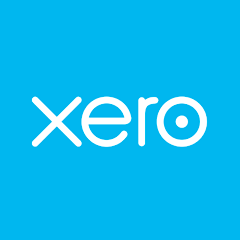The River Island crisis signals a wake-up call: Why UK retailers must sell online or disappear
![]() Kieron James
-
Kieron James
-
UK retail faces an unprecedented crisis as physical stores struggle with rising costs and declining footfall while eCommerce becomes mainstream. Is there a solution? This blog explains how retailers can stay competitive by embracing digital platforms, social commerce, and modern payment tech.
UK retail is at a crossroads, and River Island’s crisis is the latest warning sign. While online sales continue to grow (+4% for the third month running), physical retail witnessed its tenth consecutive month of decline, with sales volumes dropping by 34% in July 2025 alone. The message is clear: without an online presence, high street retailers are running out of road.
River Island is now facing a critical moment, with 33 store closures, over 1,000 jobs at risk, and a £33.2 million loss following a 19% fall in sales. As reported by the BBC, the fashion chain’s future hangs in the balance ahead of an upcoming High Court ruling, a moment that could determine whether the brand survives or joins the growing list of high street casualties.
According to Catherine Shuttleworth of Savvy Marketing, River Island’s costly reliance on physical stores, as overheads rise and footfall declines, has become a major liability. With mounting competition from online-first giants like Shein and Temu, the pressure on legacy retailers has never been greater.
For independent shops, fashion chains, and heritage brands alike, the lesson is clear: those who aren’t selling online are at risk of disappearing. But there’s hope. With the right eCommerce strategy, digital storefront, and modern payment solutions, retailers can adapt, compete and thrive.
The shift in retail: From storefronts to screens
The UK retail landscape is splitting in two. While digital channels thrive, traditional brick-and-mortar stores are watching footfall and sales evaporate and River Island’s crisis is just the beginning.
The real cost of staying offline in UK retail
The August 7th High Court deadline for River Island isn't just about one struggling fashion brand, it reflects a much broader challenge across the UK high street. According to the CBI Distributive Trades Survey, retail sales volumes fell by 34% in the year to July 2025, with an even steeper drop of 36% forecast for next month. Seasonal performance is also grim, sitting at 10%, highlighting just how widespread the crisis has become.
River Island’s problems are just one example of how fast even major retailers can unravel. Beyond the planned 33 store closures, the company is now seeking rent reductions across 71 more locations. Many of these stores were originally placed in once-thriving shopping districts that have since lost footfall, now sitting on the outskirts of consumer relevance.
Legacy retailers are being hit from all sides. Not only are they facing rising operational costs and post-pandemic shifts in consumer habits, but they’re also losing ground to digital-native players like Boohoo, and aggressive entrants like Shein and Temu, who offer faster delivery, cheaper prices, and seamless online experiences.
And it’s not just about store closures, it’s about losing consumer trust. When suppliers, landlords, and investors start to question a retailer’s long-term viability, the financial pressure intensifies. That spiral of uncertainty makes it harder to secure favourable terms, launch new initiatives, or attract talent, all of which contribute to the decline.
What River Island is facing today could just as easily be the story of any UK retailer still betting solely on footfall. Without an eCommerce presence, even well-known brands are quickly becoming invisible in a market that’s shifting faster than ever.
The collapse of physical retail: What the sales decline means
River Island’s struggles reflect a deeper truth: the decline of physical retail is no longer just a financial problem, it’s a strategic one. Across the UK, retail businesses of all sizes, from boutiques to heritage chains, are being caught out by how quickly customer expectations have shifted. Shoppers now want convenience, flexibility, and personalised experiences and they’re increasingly turning to digital-first brands to get them.
Without a strong online presence, even well-known local retailers risk becoming invisible. And for newer or independent stores, the challenge is even steeper. Having a recognisable name isn’t enough you need to be relevant, reachable, and responsive in the digital spaces where your customers already spend their time.
What’s more, the time available to adapt is shrinking. Market changes now happen faster than most retailers can react. Even River Island, an early eCommerce adopter in the late 1990s, has found that past innovation doesn’t protect against present-day pressures. Staying competitive requires ongoing digital investment not just a one-time shift.
Physical retail still has value but it can no longer stand alone. Without the scalability, data insights, and always-on accessibility of online operations, any retailer risks falling behind regardless of their size, location, or history.
Online retail is booming: The stats every UK retailer should know
While many physical retailers are still struggling to recover, digital commerce continues to grow steadily and shows no signs of slowing down. According to recent data from Analyzify, UK eCommerce revenue is set to reach $194.1 billion by 2027, marking eight consecutive years of growth. For any retail business, large or small, the message is clear: the future is digital.
With millions of UK consumers shopping online every month, and platforms from mobile apps to marketplaces driving more sales than ever, retailers without a strong online presence are steadily losing visibility. It’s no longer just about having a website, it’s about showing up where customers are already searching, scrolling, and buying.
Consumer habits have shifted permanently. From fashion and food to electronics and essentials, people now expect convenience, personalisation, and easy access, and they’ll choose brands that meet those expectations online. Retailers who fail to meet them risk falling behind, no matter how established they are on the high street.
The growth in eCommerce is an opportunity but only for those ready to embrace it. Whether you're running a boutique, a family-run store, or a multi-location chain, investing in digital is no longer optional. It's the foundation of retail survival and success in the UK.
Why digital-first retailers are pulling ahead and what it means for everyone else
Retailers that started online or moved early are now reaping the rewards of a flexible, data-driven, and customer-centric model. Unlike traditional stores limited by geography and opening hours, digital-first businesses operate 24/7, reach global audiences, and adapt rapidly to changes in consumer behaviour.
Lower overheads, smarter inventory management, and real-time sales insights allow these businesses to make sharper decisions and scale at speed. From seasonal stock shifts to targeted promotions, they’re using data, not guesswork, to stay ahead of customer expectations.
But it’s not just about operations. The digital advantage shows up in marketing, too. Brands with strong online presence can build communities, engage with their audience on social media, and run cost-effective campaigns that outperform traditional advertising, reaching the right people at the right time and on the right platform.
More importantly, digital-first businesses are embedded in the customer journey. They’re there when people search for products, compare reviews, ask questions, or scroll through inspiration. This proximity gives them an edge in relevance and trust, two things that today’s shoppers demand.
For retailers still relying on footfall and window displays, this shift can feel overwhelming. But the good news? It’s not too late. With the right tools, platforms, and mindset, any retailer, whether you're running a corner shop, a boutique, or a multi-location chain, can start building a strong online foundation.
Platform strategy: Choosing your online presence
Getting online is no longer optional; it’s survival. But how you go online matters just as much as when. Whether you're a boutique owner in Manchester, a fashion shop in Glasgow, or a high-street chain with national reach, your choice of platform can determine whether your digital journey becomes a steady climb or a missed opportunity.
The good news? There’s no one-size-fits-all answer. From social media storefronts to full-scale eCommerce platforms, retailers have more choices and fewer excuses than ever.
Social media commerce: Where discovery becomes purchase
Social platforms have evolved from marketing channels to full-blown sales engines and consumers are shopping without ever leaving their feeds. Social commerce is now a $1.2 trillion global industry, and platforms like Instagram, TikTok, and Pinterest are leading the way.
- Facebook and Instagram shops let you build curated storefronts directly on your brand’s social pages, ideal for retailers with limited tech know-how but strong visual appeal.
- TikTok Shopping taps into viral discovery and impulse buying through short-form video. Especially popular with Gen Z audiences, it turns entertainment into eCommerce.
- Pinterest Business gives products extended shelf life through searchable, shoppable pins, great for lifestyle, fashion, home, and gifting categories.
Why it matters: Social commerce reduces friction. Customers can discover, engage, and buy, all in the same scroll. It’s mobile-first, algorithm-powered, and increasingly the starting point for product discovery.
Ecommerce powerhouses: Shopify Vs WooCommerce
For businesses looking to build or scale a digital store, two eCommerce platforms dominate the market: Shopify and WooCommerce. Both enable retailers to launch online storefronts, manage products, accept payments, and reach customers directly, but they take different approaches. Shopify is a fully hosted, subscription-based platform designed for fast setup and ease of use. WooCommerce, by contrast, is a powerful open-source plugin for WordPress, offering more control and customisation for those with technical resources. Choosing the right one depends on how quickly you need to go live and how much flexibility you want.
Let’s break down the strengths of each platform so you can choose the one that aligns best with your business goals, resources, and timeline.
Shopify: Speed, simplicity, and scale
Market share: 26.2% globally, rising to 28.8% among the world’s top eCommerce sites
Best for: Retailers who want fast setup, minimal tech maintenance, and scalable features
Standout features:
- Built-in hosting, SSL, and PCI compliance
- 8,000+ apps for marketing, shipping, loyalty and more
- Seamless payment integrations and multi-currency support
- Easy-to-use backend and excellent customer support
Shopify is ideal for retailers who want to go live quickly and compete with digital-native brands, especially during uncertain times where speed to market can make or break a business.
WooCommerce: Flexibility and control
Market share: Powers 20.1% of eCommerce sites globally and integrates with over 3.5 million WordPress websites
Best for: Tech-savvy retailers who want total customisation and control
Standout features:
- Open-source platform with thousands of plugins
- Ideal for SEO and custom-built designs
- Lower long-term costs (if you handle hosting yourself)
- Works seamlessly with WordPress for content-led strategies
WooCommerce is a better fit for businesses with technical expertise or a developer on hand, especially if long-term flexibility and branding control are high priorities.
Identity resolution: Knowing your digital customer
In a post-crisis retail environment, owning your online platform isn’t enough, success depends on truly knowing who your customers are. This is where identity resolution becomes essential. By connecting fragmented data from multiple touchpoints, social media, email interactions, browsing behaviour, and in-store visits, retailers can build a unified customer view. This enables personalised experiences, smarter marketing, and stronger loyalty. In 2025, leading UK retailers are using identity resolution to turn anonymous traffic into actionable insight, helping them understand intent, reduce wasted ad spend, and deliver relevance at scale. For brands facing the same crossroads as River Island, investing in identity intelligence is no longer optional, it’s survival.
Summary: Match platform to purpose
If your goal is to test products quickly, attract mobile-first shoppers, or create a low-barrier digital presence, social commerce is the fastest route.
If you need a complete store, Shopify gives you a streamlined experience with great support.
If you want to custom-build your online shop around your brand and own every detail, WooCommerce offers the tools, if you have the time and tech.
Gateways to growth: The role of payment technology in eCommerce
In eCommerce, you don’t just sell products you sell trust. And nothing tests that trust more than your checkout experience. For UK retailers shifting from physical to digital, choosing the right payment gateway is a make-or-break decision. It affects customer confidence, cash flow, and ultimately, your conversion rate.
What UK retailers should look for in a payment gateway
In today’s competitive eCommerce landscape, the checkout experience can make or break a sale. With UK cart abandonment rates averaging 70.19% in 2024, clunky payment processes are costing retailers real revenue. The solution? A payment gateway that’s fast, secure, flexible, and localised.
1. Prioritise trust and security
With 43% of UK consumers reporting fraud in 2024, and 75% of e-businesses planning to increase security investment, robust protection is non-negotiable. Look for PCI DSS compliance, 3D Secure authentication, and AI-driven fraud prevention to give your customers peace of mind.
2. Localised payments, global reach
Retailers should support both multi-currency transactions and popular UK methods like Klarna, PayPal, Apple Pay, and open banking. Offering familiar, trusted options boosts conversion and buyer confidence, while fast settlement times improve your cash flow during digital transition.
3. Seamless platform integration
Whether you're using Shopify or WooCommerce, frictionless payment API integration is key. Shopify’s native gateway and leading WooCommerce payment plugins enable quick setup and optimised checkout flows. A well-integrated gateway reduces drop-off and increases completed transactions.
Best UK payment gateways by platform
Selecting the right payment gateway is crucial for enhancing checkout conversion, preventing fraud, and ensuring operational efficiency. Whether you're using WooCommerce or Shopify, the ideal gateway should align with your platform's capabilities and your customers’ expectations.
Top WooCommerce payment gateways
Stripe
- A global leader known for reliability.
- Supports 135+ currencies
- Accepts Apple Pay, Google Pay, and Klarna
- Fees: 2.9% + £0.20 per transaction
WooCommerce Payments
- Built specifically for WooCommerce users.
- Native integration for streamlined setup
- Unified dashboard for sales, disputes, and analytics
- Great option for merchants who want full WooCommerce payment gateway control
- A standout solution using Open Banking technology.
- Just £19.99/month for 2,000 transactions
- Additional transactions cost only 1p (no percentage fees)
- Ideal for fast, secure instant bank payments without card networks
Top payment gateways for Shopify
Shopify Payments
- Fully integrated with the Shopify ecosystem.
- Enables lightning-fast checkout via Shop Pay
- Built-in fraud prevention and instant payouts
PayPal
- One of the most recognised digital wallets.
- Supports Pay in 3 and rapid business withdrawals
- Familiar and trusted by UK customers
Adyen
- Powerful enterprise-grade gateway.
- Accepts 100+ local and global payment methods
- Strong fraud detection and chargeback management tools
The open banking revolution
Open Banking is transforming how people pay online and how retailers get paid. It enables direct, instant bank transfers without going through card networks. This makes payments more secure, faster to settle, and significantly cheaper to process.
For UK retailers, especially those using WooCommerce or Shopify, integrating Open Banking payment plugins like Wonderful offers major advantages:
- Lower fees and fewer intermediaries
- Strong security with encrypted bank-to-bank transfers
- Seamless mobile experience, ideal for today’s shoppers
Adopting Open Banking technology isn't just a trend; it's a competitive edge.
Implementation roadmap: Navigating from crisis to digital success
Moving from storefront struggle to online sustainability isn’t about a single decision; it’s a series of focused, time-sensitive moves. This three-phase roadmap outlines a clear, actionable path to launching and scaling your digital retail presence in just weeks.
Phase 1: Rapid digital setup (Weeks 1 and 2)
Get online fast. Choose a platform that fits your urgency: Shopify for a plug-and-play launch or WooCommerce for full flexibility. Upload your product catalogue with clean, mobile-friendly visuals, and set up a secure, seamless checkout flow. Ensure you're ready to accept payments by integrating your initial gateway. Card payments should be your starting point, with basic wallet support. The goal is to make your store live, stable, and capable of taking orders from day one.
Phase 2: Experience and channel expansion (Weeks 3 and 4)
Now shift focus from function to experience. Expand your payment offering beyond cards to include Buy Now Pay Later, digital wallets, and open banking tools like Wonderful, catering to the growing demand for payment flexibility. Next, make your store mobile-first in every sense: fast-loading, thumb-friendly, and intuitive. Finally, activate your social commerce presence on TikTok, Instagram, and Facebook, where product discovery and purchase happen side-by-side. This phase is about making your store feel natural in the digital lives of your customers.
Phase 3: Growth and optimisation (Month 2 onwards)
With the foundation in place, focus on scaling. Use advanced analytics to track user behaviour, optimise conversion rates, and identify where customers drop off. Implement email automation to re-engage visitors and recover abandoned carts. Strengthen your SEO and content marketing strategy to reach the 38% of consumers who use search engines for product discovery. Plan for multi-channel expansion across marketplaces and international markets by localising payment options and logistics, ensuring you’re ready to grow beyond your immediate audience.
The River Island crisis: A case study in digital urgency
The High Court date on August 7th isn’t just a turning point for River Island, it’s a warning for every brick-and-mortar retailer. Their challenges are familiar: high operational costs, declining footfall, difficulty engaging digital-native customers, and the pressure of competing with agile online brands.
Fashion analysts agree: High Street retailers must now blend premium positioning with robust digital capability. That means focusing less on seasonal risks or microtrend-chasing, and more on consistent, data-driven strategies that ensure long-term relevance.
River Island was an early adopter of eCommerce in the late 1990s. But that head start didn’t translate into ongoing innovation. Simply being online isn’t enough anymore. Today’s successful retailers need to:
- Launch on a stable digital platform with fast deployment
- Integrate a secure, flexible payment gateway (including Open Banking)
- Leverage social commerce across Instagram, TikTok, and Facebook
- Optimise every part of the experience for mobile-first consumers
Nick Sherrard, Managing Director at Label Sessions, puts it bluntly: “River Island's leadership team clearly think that if they can just get a few more months, they can turn the ship around but the best businesses know that you always have a lot less time than you think before change hits the market.”
The real question isn’t if you should transform. It’s how fast you can go digital before your own August 7th moment arrives. The time to act isn’t next quarter. It’s now.
FAQ
What caused River Island’s financial crisis in 2025?
River Island’s crisis stems from rising operational costs, falling store traffic, and delayed investment in digital infrastructure and eCommerce platforms.
Is the UK retail industry in crisis?
Yes. UK retail is undergoing major disruption, with physical stores struggling to compete against fast-moving online and mobile-first retailers.
What is the best eCommerce platform for UK retailers in 2025?
Shopify is ideal for speed and simplicity; WooCommerce offers greater flexibility and control. The best choice depends on your business size, tech skills, and goals.
Why is social commerce important for UK retail businesses today?
Platforms like Instagram, TikTok, and Facebook now drive product discovery and sales. Social commerce helps retailers reach mobile-first consumers and shorten the path to purchase.
What are the risks of delaying digital transformation for physical stores?
Delaying can lead to declining sales, customer loss, cash flow issues, and even insolvency, especially as competitors move online faster.
What can UK retailers learn from River Island’s crisis?
Adapt quickly. Invest in the right eCommerce platform, integrate modern payment gateways, and ensure a mobile-first experience to remain competitive.
Can physical stores survive without selling online?
Very few can. Today’s shoppers expect to browse and buy online. Without digital channels, customer reach, sales, and brand relevance will erode quickly.
What are the top WooCommerce payment gateways in the UK?
Stripe, WooCommerce Payments, and Wonderful (for open banking) are top-rated for security, ease of use, and affordability.




